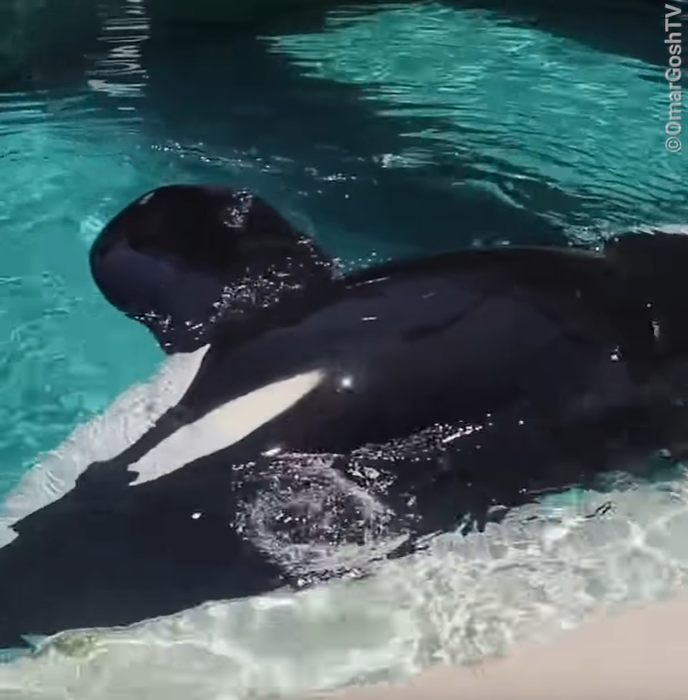Some wild animals suffer in captivity, performing for food to entertain people and earn money. Around 60 killer whales live in unsuitable conditions around the world. Due to frustration, these intelligent and emotional creatures also resort to attacking humans, sometimes resulting in death.
YouTuber Omar Gosh recorded a heartbreaking and infuriating video in SeaWorld. The footage captured a killer whale in poor condition lying motionless in one place. “It doesn’t look healthy or happy, it’s lying motionless in one place for about 10 minutes, “said Gosh. Two years ago, PETA took the same video of the orcas languishing in the same spot in the same cramped pool.
Killer Whales in Captivity
Whale killers spend 95% of their life outside captivity, underwater. In nature, whale killers can swim more than 100 km a day and dive to the depths of hundreds of meters. They can get sunburned in a small shallow tank. Not only SeaWorld’s inadequate tanks themselves but also visitors’ hands trying to touch animals present a certain threat.

These stressful conditions often lead to frustration and even violence between animals, as well as to humans. Captive killer whales killed 4 people by 2020.
Catching Orcas
Catching a live killer whale and transporting it to an entertainment company is a lucrative business. Young killer whales, forcibly separated from their mother, face a long transport to synthetic tanks. Only a tiny percentage of killer whales survive hunting and transport. Just to make money on performances for people.

Orcinus orca whale, also known as the Killer whale, is the largest member of the dolphin family. Killer whales are at the top of the food chain because they do not have a natural enemy, except for humans.
Man is the only thing that poses a real danger to these intelligent creatures. 129 out of 166 killer whales held since 1961 have died of human error. The only option is new laws to protect wildlife. And don’t support these devices.




